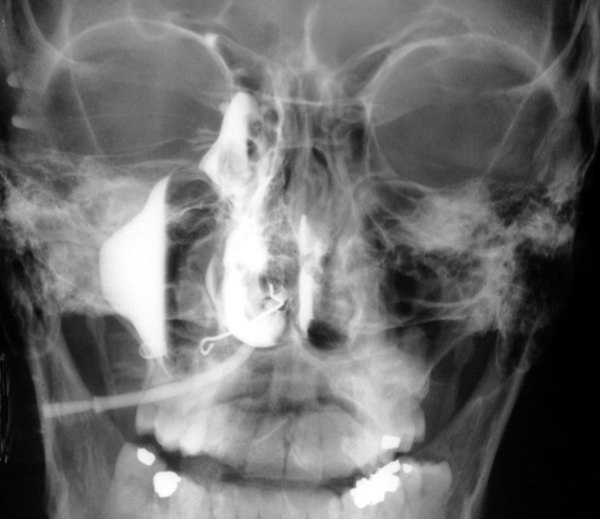Date: 3 May 2013
Yamik catheter for rinsing nasal and paranasal cavities. Image D
Copyright:
These images were kindly given by Andreas Neher of the Department of Otorhinolaryngology, Innsbruck Medical University, Anichstr. 35, Innsbruck, Austria. For further details of the procedure please refer to the PDF link above. (C) Fungal Research Trust
Notes:
Rinsing of the nasal and paranasal cavities applied via a novel catheter system (YAMIK). The cavities were rinsed with 10–20 ml of 1% aqueous N-Chlorotaurine (NCT) solution, treatment consisted of three lavages per week for 4 weeks. N-Chlorotaurine is a mild endogenous oxidant with broad-spectrum antimicrobial activity. The use of the catheter proved to be a successful way of rinsing the nasal and paranasal cavities. Link to PDF with further details.
C,D X-ray set up of a healthy volunteer rinsed with 10 ml of radio-opaque solution via YAMIK catheter demonstrating sufficient filling of the paranasal sinuses.
Images library
-
Title
Legend
-
Conidial head and brown conidia in a section of a fungus ball caused by Aspergillus niger (H&E, x 400).

-
Double diffusion test for aspergillosis. Central well contains Aspergillus fumigatus antigen and wells in the top and bottom contain control antiserum.
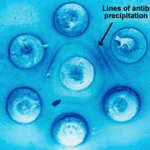
-
Allergic Bronchocentric Granulomatosis. low power. Sections show muscle, lung with acute inflammation and evidence of organisation with early fibrosis. The bronchial wall can be seen with chronic inflammation and many eosinophils.There is a thickened basement membrane. No definite granulomata are seen.

-
Allergic Bronchocentric Granulomatosis. Sections show muscle, lung with acute inflammation and evidence of organisation with early fibrosis. The bronchial wall can be seen with chronic inflammation and many eosinophils.There is a thickened basement membrane. No definite granulomata are seen.
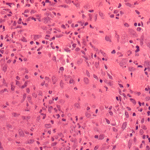
-
Allergic Bronchocentric Granulomatosis. Higher power. Sections show muscle, lung with acute inflammation and evidence of organisation with early fibrosis. The bronchial wall can be seen with chronic inflammation and many eosinophils.There is a thickened basement membrane. No definite granulomata are seen.
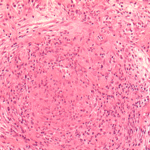
-
Allergic Bronchocentric Granulomatosis. Higher power. Sections show muscle, lung with acute inflammation and evidence of organisation with early fibrosis. The bronchial wall can be seen with chronic inflammation and many eosinophils.There is a thickened basement membrane. No definite granulomata are seen.
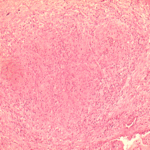
-
Allergic Bronchocentric Granulomatosis. Low power. Sections show muscle, lung with acute inflammation and evidence of organisation with early fibrosis. The bronchial wall can be seen with chronic inflammation and many eosinophils.There is a thickened basement membrane. No definite granulomata are seen.
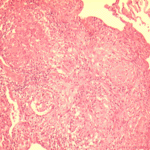
-
Allergic Bronchopulmonary Aspergillosis (ABPA). PT JC
CXR prior to bronchoscopy had shown an opacity just superior to the right hilum, which was felt to represent possibly a fungal plug. Patient was therefore bronchoscoped.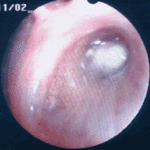 ,
, 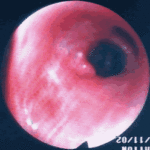
-
Secondary metabolites, Structural diagram. Trivial name – 2-hydroxy-3-methyl-1,4-benzoquinone

-
Secondary metabolite structure: trivial name – 13-O-Methylviriditin


